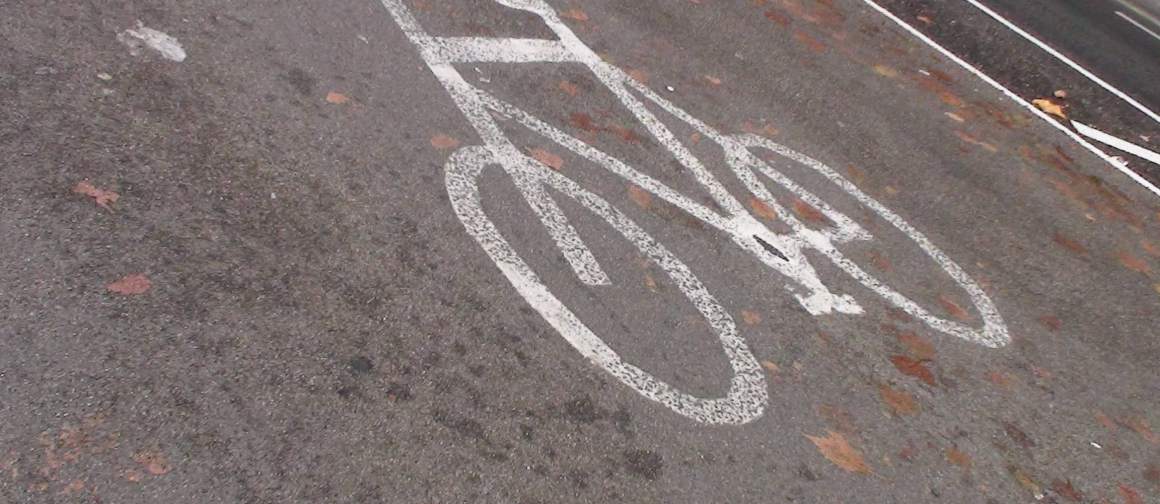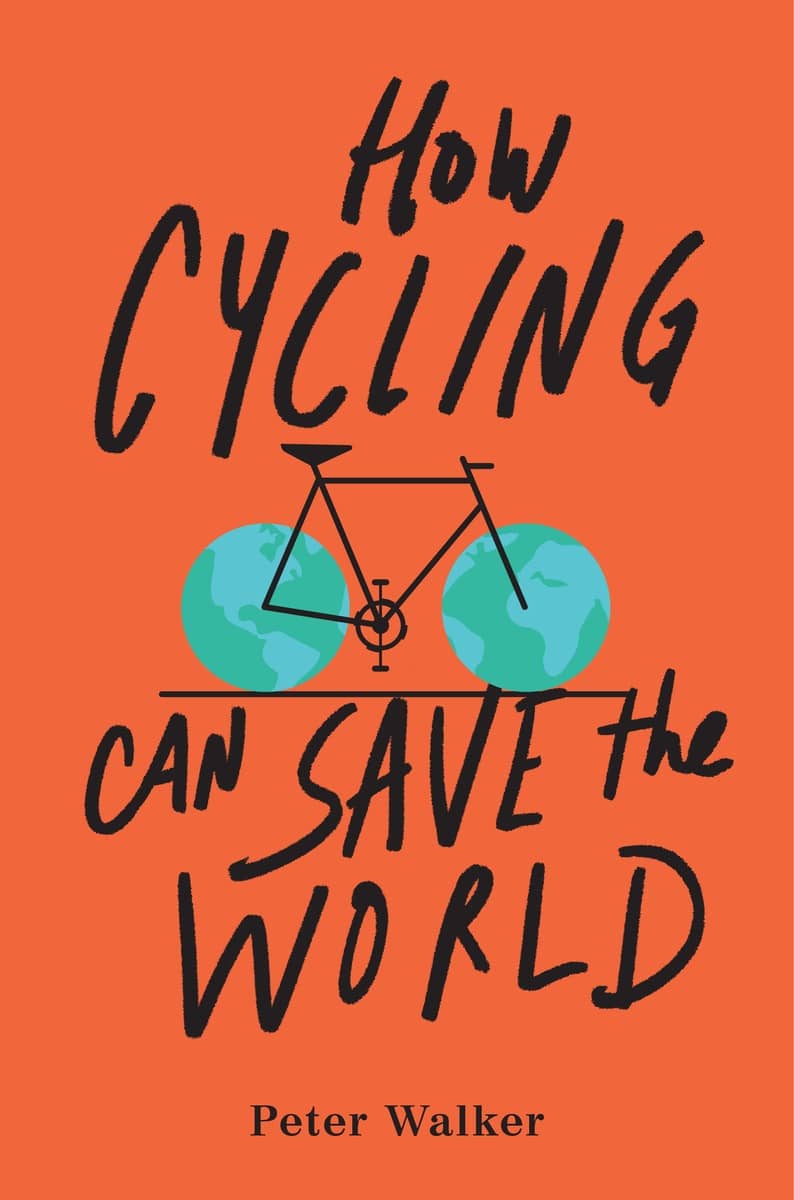
In a new book The Guardian’s political correspondent and influential cycling expert Peter Walker, makes a well-researched global argument for building or improving upon existing cycle infrastructure to encourage mass cycling in our cities worldwide. Mass cycling, as Walker defines is, the sort where 20-30% of all trips in a country are made by bike, only happens when cycling becomes mainstream.
Finding a like-minded pundit, I’ve enjoyed the read because Walker insists people need to feel safe, protected, and welcome on the roads in order to get on their bikes. And, when they do, they take part in reducing smog, obesity, and car related deaths, as well as improving their quality of life, their physical and mental health.
Walker’s publisher, Penguin Random House, sent me a copy of the book to review and the excerpt below. How Cycling Can Save the World is available now on Amazon in paperback and Kindle for $11.00. Read more about riding in London in our archives.
Build it and They Will Come
Key principles for building a cyclist-friendly community
Just about everywhere which has built workable bike infrastructure has seen a resultant rush of cyclists. Conversely there is, virtually without exception, no city or country which has significant amounts of cycling which has not rebuilt its streets for bikes.
New York City has seen a massive increase in cyclists since Mayor Michael Bloomberg’s conversion to cycle lanes in 2006. Levels were creeping up anyway, rising about 70 percent between 2000 and 2006. But from 2006 to 2014 they shot up 250 percent.i
In London, the first snippet of proper separated routing, around the previously fearsome Vauxhall gyratory just south of the River Thames, saw bike numbers increase 75 percent in just four months.ii
Even better things were to come. As we heard in the introduction, when London’s first major separated routes were completed, within just over a month, cyclist numbers were 60 percent higher.iii Andrew Gilligan, London’s then-commissioner for cycling, recalls Seville-like scenes while the new lanes were being constructed, with riders using each completed yard of the “superhighways” more or less as soon as the asphalt had dried. “They were breaking through the barriers when the thing wasn’t even ready,” he says. “They wanted to ride on it so badly.”iv
If you get a chance to use one of the new lanes you can see why. Like in Seville, they’re two-way, but wide, smooth and with all the extra safety features you’d hope for, like cyclist-only traffic lights to stop vehicles turning across bikes. What I notice most as I move from the bus and truck frenzy of the preceding street to one of the lanes is a sense of my body untensing slightly. It is cycling as a relaxing pleasure, not an invigorating thrill.
This is one of the oddly fascinating things about infrastructure. It’s not the most alluring of words, reminiscent of power lines and sewage plants. But traffic infrastructure has a huge capacity to shape the way people move about and live, especially in a city. Wherever there are people on the move, much of the way they interact is shaped by the planned environment for different types of transport.
And when it comes to roads, these interactions are far from equal. Speeding traffic intimidates pedestrians, as it does to anyone not caged and cocooned inside a tin box. The most unequal interaction of all, arguably, is between cyclists and the vehicles with which, in far too many towns and cities, they are obliged to share space. If you decide that this relationship is essentially okay—and this, often by default, is what has been decided in the bulk of towns and cities globally—then you can forget about having more than a few percent of your population deciding to ride a bike.
This is deeply unfair. Global experience over the decades has shown that if mixing with the motor traffic is your chosen bike environment, then almost all your cyclists will be a small group who are mainly young, predominantly male, and disproportionately gung ho.
Often this discussion becomes reduced to talk of various types of bike lanes. As we’ll see below, to create mass cycling you need to shape the built environment in several other ways, too. And for all the occasionally opaque discussions about curb heights, lane barriers, and traffic light phases, this is about something more fundamental. Bike infrastructure is, at its heart, about a changed vision for the place occupied by human beings in the modern urban world.
If another nation suddenly decided it wanted to follow the Dutch or Danish model, then the changes would take time. But the only other real obstacle would be political and public will. How you do it is very well known. The practicalities have been refined and proven in the decades since both countries decided they wanted to reverse the postwar trend for car-dominated streets. A series of towns and cities in other nations have tried very similar things and, more or less without exception, they have also seen success, too. So what’s the secret?
At the most basic level there are a few main principles, with a handful of other associated tenets. First is the idea that, wherever possible, bikes should be kept separate from motor traffic on busy roads. “Busy” can be a matter of interpretation, but should encompass more or less any main route.
The Dutch bike infrastructure bible Design Manual for Bicycle Traffic recommends physical segregation on any route where the traffic flow is greater than a far-from-huge two thousand motor vehicles per day. The protection must be continuous, meaning at junctions bikes need a barrier, or their own phased traffic lights. If that seems too technical you can think about it in the more evocative phrase of Enrique Peñalosa, the bike lane–building mayor of Bogotá, who we met in the last chapter: “A bicycle way that is not safe for an eight-year-old is not a bicycle way.” This means the routes are not only safe, but they are forgiving, obvious to use, and inspire confidence.
The separation must be physical. Lanes marked with just paint won’t do it. In fact there’s evidence that in some cases this can be worse than nothing. Perhaps the biggest such leap of faith was London’s first generation of so-called Cycle Superhighways, launched amid some fanfare in 2010 as a network of quick commuting routes radiating out from the city center. These were delineated by just a bright blue strip, with nothing beyond the slight possibility of a traffic fine to keep cars and trucks out. This brought inevitable and very occasionally tragic results. A coroner examining the deaths of two cyclists on the routes warned that a painted lane could “lull riders into a false sense of security.”v
After another fatality, my newspaper sent me out to make a film, showing what it was like to ride the painted superhighway.vi It was fairly basic—me giving a running commentary to the ride into a clip microphone while a series of GoPro action cameras strapped to me and the bike showed the scene—but the eventual footage of vans and trucks whizzing past and veering across me into the paint demarcation was eloquent. “You call that a bike lane?” e-mailed one viewer from the Netherlands. “That’s not a bike lane. It’s a disgrace.”
London’s mayor at the time, Boris Johnson, eventually gave in to pressure and began building lanes with curbs. Speaking to me just before he left office in mid-2016 he conceded it would have been better to not bother with the paint at all. “Looking back on it, yes,” he said. “If I had my time again, and if I knew then what I know now, I would have gone straight in with a massive program of segregated Cycle Superhighways. I probably wouldn’t have been reelected, unfortunately. That’s one thing to consider. But that would have been the right thing to do.”
Excerpted from How Cycling Can Save the World by Peter Walker. © 2017 by Peter Walker. TarcherPerigee, an imprint of Penguin Random House LLC.
Also published on Medium.
…We're riding townies, adventure, and mountain bikes. Find recommendations on our store page. As Amazon Associates we earn from qualifying purchases.
